I’m sure you’ll agree with me when I say this: Promoting and marketing a business today is one heck of a challenge.
And let’s not forget the struggle with measuring whether your efforts bring any fruit.
In this post, we’ll look at how to use the PESO model to promote your business.
And then, at how to track your progress in every one of them.
What Are the Media Types?
When it comes to the digital marketing, the term media relates to different channels a business can use to attract visitors and customers to their site.
In general, we identify four different media types you could use:
- Paid
- Earned
- Shared
- Owned
Otherwise known as the PESO model.
Let’s take them one by one.
Owned Media in the PESO Model
The term, owned media, describes channels you control.
For example, your website, blog, social media channels, and other content you create (eBooks, white papers, presentations).
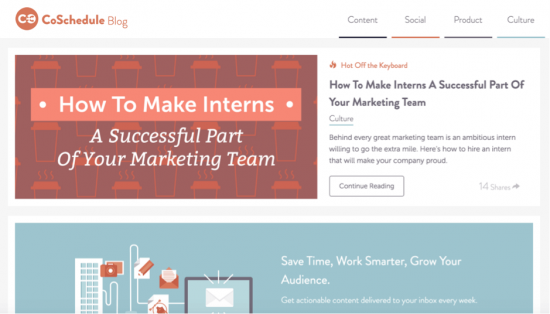
(CoSchedule’s blog, an example of the company’s owned media)
Paid Media in the PESO Model
Paid media, as the name suggests, relates to any marketing activities for which you have to pay.
In a non-digital setting, these would include ads, radio, TV, and any other paid channels.
Online, we use the term to describe online ads, such as Google Adwords, social media advertising, such as Facebook or Twitter ads, banner ads, or sponsored posts.
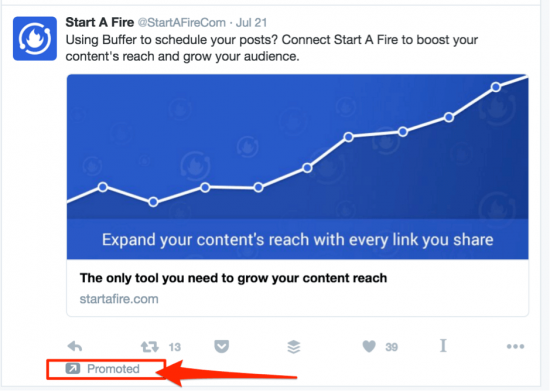
(Start a Fire’s Twitter ad, an example of the company’s paid media)
Earned Media in the PESO Model
The term, earned media, on the other hand, describes content relating to your brand, products, or service that has been created by someone else or the coverage you get on other site.
This could include media coverage, mentions on social media, reviews, feedback, and blog posts referencing you.
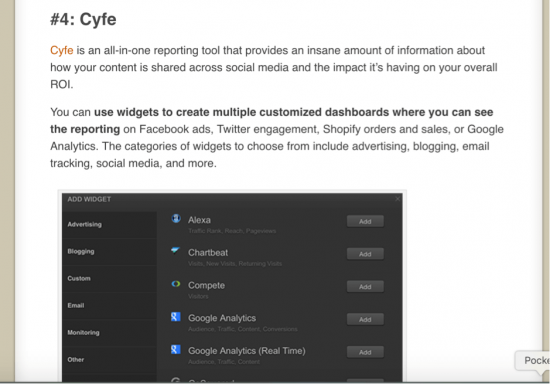
(Mention of Cyfe, a reporting tool, on Social Media Examiner. An example of company’s earned media)
Shared Media in the PESO Model
Finally, we use the term shared media to denote anything and everything related to social media.
Why Should You Use More than Just One Media Type?
The reason is actually quite simple.
You see, relying on just a single traffic source leaves you vulnerable to any changes and new developments affecting the channel.
Let me illustrate this with an example.
A couple of years ago, companies that focused the majority of their marketing on SEO and owned media saw a major decline in traffic and leads after various search ranking algorithms.
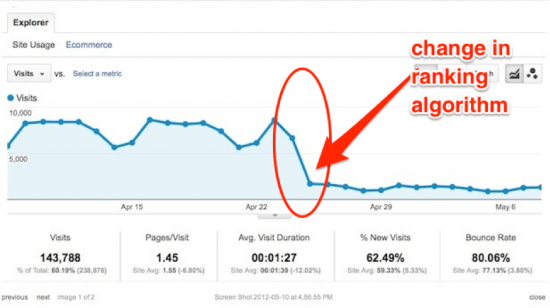
(Screenshot of a traffic loss after a ranking algorithm update. Image source. Annotation by the author.)
And needless to say, many of them still haven’t fully recovered.
Companies that generated new business entirely through ads got hit by the increasing cost of online advertising.
As the most recent data shows, even branded searches are becoming too expensive to bid.
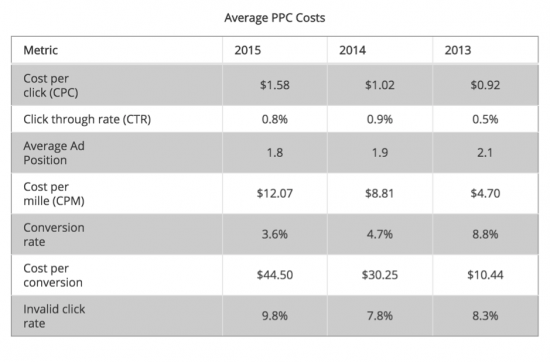
To prevent a similar scenario for your business, you should use an integrated approach—the PESO model.
How Do You Know If Any of the Channels are Working for You?
Ask any business owner and I’m sure they’ll all agree: In spite of all the data available, they still find measuring marketing effectiveness tough.
If I could guess what is the main reason for this, it would be the lack of insight into what actual metrics to track.
Measure Owned Media
As you fully control this media type, it’s also the simplest one to measure.
You can access most of the data you need in your Analytics platform, plus extract the rest from social media profiles.
In particular, to establish if your owned media efforts bring results, take a look at the following metrics:
- Overall traffic growth.
- Traffic growth per content types.
- Leads from owned content.
- Social media engagement. In particular, check if visitors share your content with their social audiences.
Most of the owned media traffic can be tracked with Google Analytics.
To track social media engagement, you could use:
- Buffer (particularly their sharing and engagement reports),
- Mention (to keep an eye on social mentions of your brand).
Measure Paid Media
Because paid media relies on you spending money to gain traffic, metrics you should pay attention to include:
- Cost of visitor acquisition.
- Cost of lead acquisition.
- Total spend vs. traffic growth.
Most paid media platforms (i.e. Google Adwords or Facebook Ads) offer an in-depth data about your campaigns’ performance.
However, you can also use additional tools such as AdEspresso to monitor and manage your online advertising.
Measure Earned Media
Unlike the two other media types, earned media poses a certain challenge when it comes to tracking and measurement.
As you remember, this media type includes your brand- or product-related content that wasn’t created by you.
And thus, to measure it you need to use a brand monitoring tools (i.e. Buzzsumo or SEMrush Brand Monitoring Tool).
(Editor’s Note: The Modern Blogging Masterclass teaches you how to do this with a simple spreadsheet, Google Analytics, and your CRM.)
These tools monitor the web for mentions of your brand, products or any other keywords you’d like to track, report on their findings, and even allow you to respond or engage with authors of those comments.
Measure Shared Media
You should track metrics such as social media shares (particularly likes, comments, and reposts, but also monitor for customers referring your brand online).
Most social networks include tools allowing to monitor such engagement.
Tools such as Mention, Buzzsumo offer functionality to monitor these metrics and track your shared media engagement.
Another way to monitor shared media, particularly referrals is to add tracking codes to any links you publish online to monitor traffic they send to your site.
A Word on Converged Media
Recently, a new media word has caught marketers’ attention—converged media.
In short, this media types relies on brands integrating owned, paid, and earned media types to deliver campaigns that position your content at the right touch-points in the customer’s journey.
This is PESO model implementation at it’s best because it integrates more than one media type to create a complete experience for a customer:
- Positioning your brand as an influencer (earned and owned media).
- Developing strong online presence (owned and paid media).
- Reaching out to customers directly (paid and shared media).
And That’s it
Hopefully, this article has helped you understand the different media types to promote your business.
And showed you where to start and how to find out if your efforts bring any fruit.
What’s left then is to pull sleeves up and get to work, devising and launching marketing strategies using those media types.
Good luck!